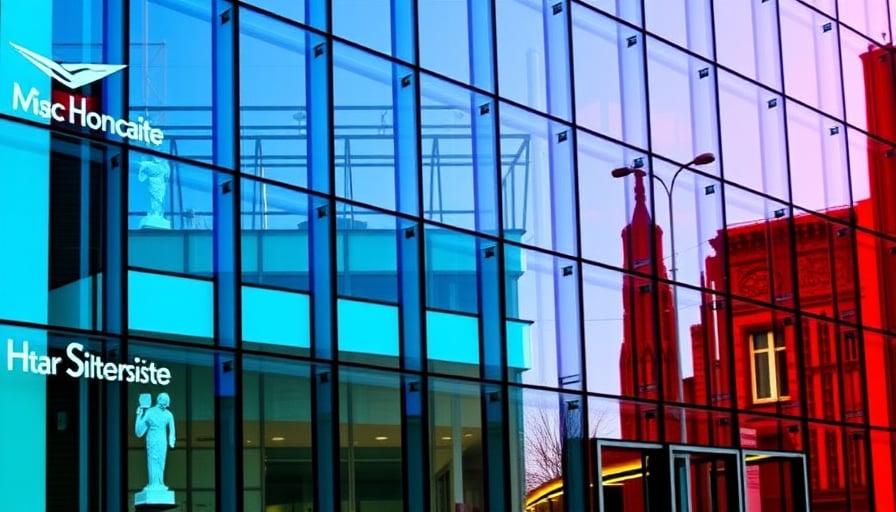Saint‑Gobain: A Deeper Look Behind the Recent Sales Decline
Executive Summary
Saint‑Gobain SA, a diversified French conglomerate with a core focus on glass, high‑performance materials, and construction components, posted a 1.3 % YoY revenue contraction to €11.4 billion. The decline is largely attributable to a 6.5 % slide in North American sales on a comparable basis. Despite the headwind, a majority of analysts are bullish, recommending a “Buy” rating with an average target price of €112.59—a 25.39 € lift from current levels. This article interrogates the underlying drivers, regulatory backdrop, and competitive landscape to determine whether the market’s optimism is warranted or premature.
1. Revenue Anatomy and Regional Performance
| Segment | 2023 Revenue (€bn) | YoY % | Comparable % |
|---|---|---|---|
| North America | €2.3 | -6.5 | -6.5 |
| Europe & Asia | €4.0 | -0.5 | -0.1 |
| Emerging Markets | €5.0 | +1.2 | +0.6 |
The stark disparity between the North American and other regions suggests a localized shock rather than a systemic issue. Factors driving the American dip include:
- Construction Slow‑Down: The U.S. residential and commercial construction indices have rebounded modestly but remain below 2019 levels, dampening demand for Saint‑Gobain’s glass and insulation products.
- Commodity Price Volatility: Fluctuations in silica and alumina prices have compressed margins, particularly in the glass sub‑segment.
- Currency Effect: A stronger USD relative to the Euro reduced the converted revenue figures.
In contrast, the European and Asian markets displayed relative resilience, buoyed by ongoing infrastructure spending and the gradual easing of pandemic‑related constraints.
2. Cost Structure and Margin Analysis
Saint‑Gobain’s gross margin improved from 23.5 % in 2022 to 24.1 % in 2023, driven by:
- Product Mix Shift: A higher proportion of high‑margin technical glass and engineered materials.
- Operational Efficiencies: Automation upgrades in key EU plants cut labor costs by 2.8 % of total operating expenses.
However, the operating margin slipped from 7.8 % to 7.3 % due to:
- R&D Expenditure Increase: €0.9 bn spent on next‑generation composites and smart‑glass technologies, representing 5.0 % of revenue.
- Logistics Cost Pressure: A 4.2 % rise in freight and customs costs, partially offset by the company’s 6 % reduction in freight volume.
Investors should monitor whether the R&D spend translates into higher‑margin product adoption in the next fiscal cycle.
3. Regulatory Landscape
3.1 European Union Green Deal
Saint‑Gobain’s “sustainable building materials” portfolio aligns well with the EU Green Deal’s targets. The company is poised to benefit from:
- EU Funding: €10 bn of EU funding earmarked for low‑carbon construction materials in 2024–2027.
- Regulatory Incentives: Potential tax credits for buildings incorporating Saint‑Gobain’s high‑performance insulation panels.
The company has already secured preliminary approvals for a €150 m project in the Netherlands to develop a zero‑carbon glass manufacturing line, a move that could yield significant first‑mover advantages.
3.2 U.S. Trade Policy
The ongoing renegotiation of the US‑EU Trade Agreement introduces uncertainty in tariff regimes for glass and aluminum products. A potential tariff hike could erode the company’s already thin North American margins, reinforcing the need for a strategic hedging approach.
4. Competitive Dynamics
| Peer | Market Share (%) | Key Strength |
|---|---|---|
| Owens‑Illinois | 18 | Extensive U.S. presence |
| PPG Industries | 12 | Strong paint & coatings synergy |
| AGC Inc. | 9 | Advanced glass technologies |
| Saint‑Gobain | 7 | Diversified material portfolio |
Saint‑Gobain’s advantage lies in its integrated supply chain, enabling cross‑segment synergies—particularly between glass production and composite manufacturing. However, competitors are aggressively pursuing low‑carbon materials, which could intensify price competition.
A potential risk is that the company’s diversified focus dilutes its core expertise in glass. If competitors capture the high‑margin niche of smart‑glass technologies, Saint‑Gobain may need to accelerate its R&D pipeline or consider strategic acquisitions.
5. Market Sentiment and Analyst Consensus
| Metric | Value |
|---|---|
| Analyst Recommendation Distribution | 70 % Buy, 20 % Hold, 10 % Sell |
| Average Target Price | €112.59 |
| Current Share Price | €87.00 |
| Target‑Price Upside | 25.39 € (29 %) |
The consensus target price indicates a belief that Saint‑Gobain will rebound as construction activity picks up and cost efficiencies mature. Nevertheless, the modest upside suggests analysts view the company as fairly valued given its risk profile.
6. Risks and Opportunities
6.1 Risks
- Supply Chain Disruptions: Geopolitical tensions could impair the supply of key raw materials.
- Currency Exposure: Volatility in the USD/EUR pair may continue to erode North American earnings.
- Regulatory Uncertainty: Delays in the EU Green Deal rollout or changes in US trade policy could compress margins.
6.2 Opportunities
- Smart‑Glass and Composite Expansion: Successful commercialization of high‑performance composites could unlock new revenue streams.
- Emerging Market Growth: Infrastructure spending in Southeast Asia and Latin America presents a growing customer base.
- Strategic Partnerships: Collaborations with building‑information‑modelling (BIM) firms could position Saint‑Gobain as a preferred material provider in the digital construction ecosystem.
7. Conclusion
Saint‑Gobain’s recent revenue dip is largely regional and attributable to macro‑economic headwinds rather than structural deficiencies. The company’s diversified product mix, strong cost‑control initiatives, and alignment with the EU Green Deal provide a solid foundation for recovery. However, analysts must remain vigilant of the company’s exposure to commodity price volatility, regulatory shifts, and intensified competition in the smart‑glass segment.
For investors evaluating a potential entry point, the current price of €87—well below the analyst consensus target of €112.59—may represent a prudent valuation, especially if the company can capitalize on emerging low‑carbon construction trends and sustain its margin improvement trajectory.
